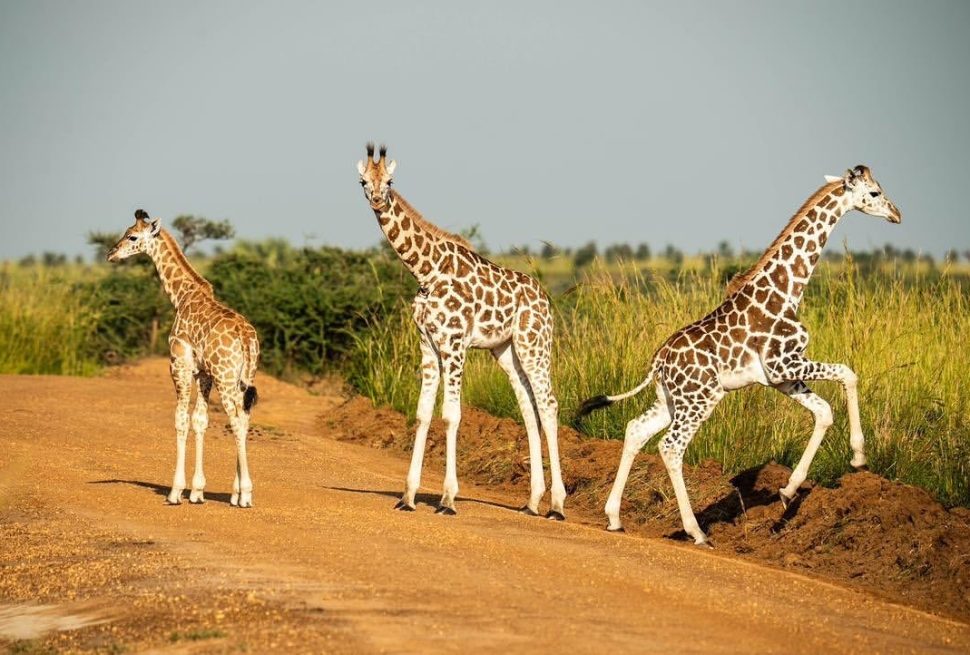Chimpanzees are one of the most fascinating and intelligent primates in the world, and Uganda is home to a significant population of these amazing creatures. Chimpanzees are often referred to as our closest living relatives, due to their striking similarities to humans. This essay provides an overview of chimpanzees in Uganda, their habitats, and how to visit them.
Why Chimpanzees are Referred to as Our Closest Living Relatives
Chimpanzees share a staggering 98.8% of their DNA with humans, making them our closest living relatives in the animal kingdom. This genetic similarity is reflected in their behavior, physiology, and anatomy. Chimpanzees possess advanced problem-solving skills, use tools, and even exhibit cultural behaviors, all of which are reminiscent of human traits.
Where to Find Chimpanzees in Uganda
Uganda is home to over 5,000 chimpanzees, with the largest population found in the Budongo Forest Reserve, located in the Murchison Falls National Park. Other notable chimpanzee habitats in Uganda include the Kibale National Park, the Kalinzu Forest Reserve, and the Queen Elizabeth National Park.
Distance from Kampala and How to Get There
The distance from Kampala to the chimpanzee habitats varies, but here are the approximate distances and travel times:
- Budongo Forest Reserve: 200 km (124 miles), 3-4 hours by car
- Kibale National Park: 320 km (200 miles), 5-6 hours by car
- Kalinzu Forest Reserve: 380 km (236 miles), 6-7 hours by car
- Queen Elizabeth National Park: 410 km (255 miles), 7-8 hours by car
Visitors can hire a private car or join a guided tour to reach these destinations. Domestic flights are also available from Entebbe International Airport to nearby airstrips.
Chimpanzee Tracking and Tourism
Chimpanzee tracking is a popular tourist activity in Uganda, allowing visitors to observe these amazing creatures in their natural habitat. The experience typically involves a guided hike through the forest, with visitors following a group of chimpanzees and observing their behavior.
The Uganda Wildlife Authority (UWA) regulates chimpanzee tracking, and visitors must obtain a permit to participate. The permit fee includes a guided tour and a contribution to conservation efforts.
In conclusion, chimpanzees are a fascinating and intelligent species that can be found in Uganda’s forests and national parks. Visitors can observe these amazing creatures in their natural habitat, while also contributing to conservation efforts. With their striking similarities to humans, chimpanzees are a must-see attraction for anyone interested in wildlife and conservation.
Chimpanzee Tracking in Uganda, Rwanda and DRC: A Comparative Analysis
Chimpanzee tracking is a popular tourist activity in the Great Lakes region of Africa, with Rwanda, Uganda, and the Democratic Republic of Congo (DRC) offering unique experiences. Each country has its own strengths and weaknesses, with varying prices, accessibility, and overall experience.
DRC
The DRC is home to a significant population of chimpanzees, with habituated groups available for tracking in Virunga National Park and Garamba National Park. However, due to ongoing security concerns and instability in the region, chimpanzee tracking in the DRC is not as popular as in Rwanda and Uganda.
The cost of chimpanzee tracking in the DRC is $100 per person for a permit, which includes a guided tour. While this is the lowest price among the three countries, the DRC’s chimpanzee tracking experience is often considered more challenging and less organized due to the country’s infrastructure and security concerns.
CHIMPANZEE TREKKING IN UGANDA: AN UNFORGETTABLE EXPERIENCE
Chimpanzee trekking in Uganda is a thrilling adventure that allows visitors to observe these intelligent and social creatures in their natural habitat. The trek typically takes place in Kibale National Park, Budongo Forest Reserve, or Kalinzu Forest Reserve, all located in western and central Uganda.
Duration of the Trek
The duration of the chimpanzee trek can vary greatly, depending on the location of the chimpanzees and the difficulty of the terrain. On average, the trek can take anywhere from 2 to 5 hours, with the actual time spent with the chimpanzees limited to one hour.
Chimpanzee Behavior
During the trek, visitors can expect to observe chimpanzees engaging in their natural behavior, such as foraging, playing, and interacting with each other. Chimpanzees are highly social creatures and are known for their intelligence and problem-solving skills.
Dress Code and Conduct
When going for the chimpanzee trek, visitors are advised to dress in comfortable and sturdy hiking boots, long pants, and long-sleeved shirts. The trek can be physically demanding, and the clothing should provide protection from the elements and any potential scratches from vegetation.
When around the chimpanzees, visitors are expected to maintain a safe distance of at least 8 meters (26 feet) and avoid direct eye contact. Flash photography is also prohibited, as it can startle the chimpanzees. Visitors should also avoid making loud noises or sudden movements, as this can disrupt the chimpanzees’ natural behavior.
Best Time for Chimpanzee Tracking
The best time for chimpanzee tracking in Uganda is during the dry season, which typically runs from June to August and from December to February. During this time, the terrain is drier and more accessible, making it easier to navigate the forest.
What to Carry
When coming for the chimpanzee trek, visitors should carry the following essential items:
– Comfortable hiking boots
– Long pants and long-sleeved shirts
– Waterproof jacket or poncho
– Sunscreen and insect repellent
– Water and snacks
– Camera and binoculars
– First aid kit
– Backpack or daypack to carry all the essentials
In conclusion, chimpanzee trekking in Uganda is an unforgettable experience that allows visitors to observe these intelligent and social creatures in their natural habitat. By dressing appropriately, respecting the chimpanzees’ space, and carrying the right gear, visitors can ensure a safe and enjoyable experience.



